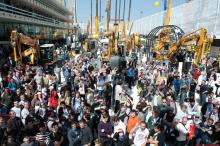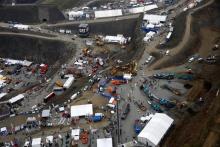
The first issue of 2013, as you will read, contains on balance a lot of positive news about the industry.
Although it is early days yet, and while it is not all good news, major companies are already flagging up better-than-expected results for the past year, and in
Indeed, a few days ago the
The report says that after having seen an upturn following the 2009 economic and financial crises, the industry is now moving sideways on this decent level it managed to also achieve again in 2012.
“Although, on the whole, times are difficult, last year was a good year for our industry”, says Johann Sailer, chairman of the industry’s association.
According to him, 2013 will not see any peaks either, although companies belonging to the industry are currently full of confidence in light of bauma.
However, and understandably, the report says that no company can do without China where it is very important to watch the situation as its development “will be of great influence and impact.”
In 2012, the domestic market on construction machinery saw a decline of 30% and while at the moment the country is facing financing problems and surplus capacities on its domestic market, experts believe China will have overcome this situation within the next 18 months.
In the long-run, China will be, and remain, the top market for construction and aggregates machinery again.
Also starting to make an impact is Indonesia: GDP of US$840 billion (€624 billion) in 2011; third quickest growing economy of Asia and one of the 20 largest national economies in the world.
According to its government, Indonesia required about 48.4 million tonnes of cement; 13.3 million tonnes of steel and 1.3 million tonnes of asphalt concrete in 2012, showing an upward trend for the future.
But the future looks less bright for the construction equipment and building material machinery industry in Europe as the discrepancy between the markets in North and South Europe keeps getting bigger.
It is impossible to predict if and when the construction industries of Spain, Portugal and Greece will finally pick up again. Germany has been, and probably will remain, stable in this regard.
“It seems most likely that growth will rather be generated in less traditional markets which many of us might not really have been considering yet,” says Sailer.
Meanwhile,









